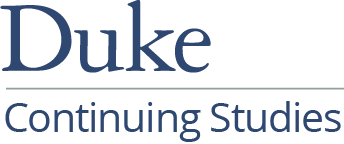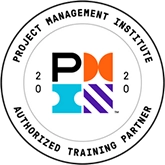Creativity and Innovation Enable Project Success
By Harry Mingail, PMP, CBAP
 Creativity and innovation are magic wands. They endow projects with enhanced performance and new profit-making results. They spark creative genius and the potential for creating wealth.
Creativity and innovation are magic wands. They endow projects with enhanced performance and new profit-making results. They spark creative genius and the potential for creating wealth.
Discovering Opportunities
Most innovation springs from a conscientious search for new opportunities. These opportunities exist both within and outside a project, organization or industry. Innovation opportunities within a project include:
- Unexpected successes or failures: Mistakes as well as successes breed innovation. Failures should not be ignored and hidden. They should be examined for possible innovative opportunities
- Process Needs: An understanding of needs leads to process-generated innovations. For example, if your project needs documentation to be written but engineers lack time, clerical or automated processing help may be the answer.
- Industry Changes: Changes in industry products or industry and market habits throw the door of opportunity open for innovators. For example, complicated networks need integration experts. Unavailable skills breed profitable consulting opportunities.
 External opportunities for innovation are revealed through:
External opportunities for innovation are revealed through:
- Demographic changes: Today, people’s age distribution, education, occupations and geographic location factors change rapidly. Those who keep their ear to the ground will be the first to spot coming changes and reap the benefits of innovation.
- Changes in Perception: People’s perceptions change. A product that is shunned one year may be sought the next. These attitudes can be defined, tested and expanded. The innovator will quickly grasp an imminent opportunity.
- New Knowledge: Innovations based on new knowledge rank high. However, lead time is long.
Staying Competitive
Consistent innovation keeps your projects competitive in a fast-paced market. Projects can stay afloat and create an organization in which:
c- Employee performance rates as very important.
- The project is structured in a way that innovative ideas rise above the din of day-to-day operations.
- Strategies are clearly defined in order that innovation can be focused.
- Idea sources are known and can be leveraged upon discovery.
- Innovative ideas are strongly supported with company resources.
Generating innovate ideas is only the first step. To be a success, innovations require four major inputs:
- Dedicated people who believe in the idea and will push it ahead despite roadblocks
- A high-ranking sponsor to marshal resources such as people, money, and time
- A melting pot of creative minds and practical doers to thrive within
- A process must be in place that will ensure the smooth and timely transition of ideas through the initiative
Boosting Creative Outlooks
- Be creative through thought processes. Discover a solution to a problem. Come up with the idea for a new product or service. Rework an old idea.
- Produce a piece of material creativity. Write a good report, program some new software or paint a picture. Create a tangible item that can be shared by others through seeing, hearing, touching, smelling or tasting.
- Demonstrate spontaneous creativity. Give a speech “off the cuff” or respond spontaneously in a meeting with a sincere comment. Express your confidence in the moment and be your best.
- Take charge of an event in a creative manner. Direct a meeting, organize an office party or devise a scheme to gain consensus in a strategic discussion.
- Evaluate your creativity in relationships. Try new approaches for old conflicts. How can you encourage cooperation and a win-win relationship? Are your words, actions and feelings expressed with creativity?
- Exercise inner creativity to help manage stress, prevent burnout and change emotions while external circumstances may remain stagnant. The stronger our inner creativity, the more effective we can be when expressing other types of creativity.
- Use matrix analysis: This approach comes in handy when developing new product lines. Market needs and technologies are defined and then formatted with product lives to represent a three-dimensional matrix. Potential ideas are then explored within this matrix.
Combining Logic and Creativity
- Morphological Analysis: This approach provides a structure for creative solutions in a logical manner. It is best suited for problems whose solutions encompass many variables.
- Reframing: This technique requires you to ask questions about your project that will lead to new frames of references to old problems. Questions asked may include: (a) What are the obvious realities of a situation and how can they be changed? (b) What are typical complaints? (c) What ideal situation do we seek?
- Force-Field Analysis: This method consists of identifying forces that contribute to or hinder the solution of a problem. Creative thinking is encouraged by clearly defining goals as well as identifying strengths to maximize and weaknesses to minimize.
- Attribute Listing: This approach focuses on identifying attributes of a process or product and how to improve one or many of them. It is similar to force-field analysis, but the attribute listing provides neutral aspects as opposed to negative or positive aspects of a problem.
- Scamper: This acronym stands for substitute, combine, adapt, modify, put to other uses, eliminate and reverse or rearrange. Address each of these issues and determine what new ideas emerge.
- Alternative Scenarios: Explore plausible futures for your project or product and you will gain a deeper understanding of potential environments in which you may have to operate. Build scenarios on the basis of principal forces and influences. Business opportunities within these scenarios formulate a future strategy.
- Forced or Direct Association: Combine two concepts that have little in common, then brainstorm to draw possible relations between the two. Fresh approaches to old problems may result.
- Design Tree: This type of “mind map” is helpful when a central topic such as a product, market, or process must be built on. By literally mapping out related ideas on a large sheet of paper, obvious results may be transformed into potential breakthroughs.
Being Intuitive
Tuning into our intuitive good sense allows us to take that leap into generating new ideas. Consider the following:
- Imagery: Create multi-sensory images in your mind to address the issue at hand. The intuitive messages that are “sent” to you can then be applied to the problem at hand. Imagery requires a relaxed state of mind, a willingness to be nonjudgmental, and a vivid imagination.
- Brainstorming: This common idea-generation approach should suspend evaluative judgments for the short term. This technique is effective in both a group and a private setting. The problem at hand should be stated in neutral terms.
- Analogy: This technique explores the similarity between two conditions that are otherwise dissimilar. Personal analogy identifies yourself with an object or process. Direct analogy compares parallel facts in two different areas in order to generate fresh solutions. Symbolic analogy uses an image that may be technically incorrect but that describes the implications of a key aspect of the problem.
- Dreams: To make this technique work, recall and record any new ideas that come to mind when day- or night-dreaming.
- Drawing: Drawings may both evoke and record creative insight. A business meeting may have a picture included along with the agenda in order to elicit further discussion on the agenda topics. Drawings help conceptualize problems.
- Meditation: This state of heightened awareness may release an inner source of creativity.
Sage Advice
World-famous management consultant Peter F. Drucker declares in Harvard Business Review’s book Innovation:
"The orderly and predictable decisions on which an organization rests depend increasingly on the disorderly and unpredictable process of innovation. How can managers expect to plan for — or count on — a process that is itself so utterly dependent on creativity, inspiration and old-fashioned luck?
Most of what happens in successful innovations is not the happy occurrence of a blinding flash of insight but rather, the careful implementation of an unspectacular but systematic management discipline.”
“The best way to predict the future is to invent it.”
— Alan Kay, a fellow of Apple Corp.
About the Author
Harry Mingail, PMP, CBAP, is a trainer and consultant for Corporate Education Group. Harry has 30 years of consulting experience in project management, portfolio/program management, and business analysis for businesses, governments and universities. For over 12 years, Harry has delivered and designed project management, business analysis, strategic planning and interpersonal skills seminars, web-based sessions, and workshops in North America, Europe and Asia. Harry is skilled at bridging technical and educational domains to advance project goals for a variety of e-learning, classroom and blended learning solutions.
For more information on this topic, as well as how Corporate Education Group can help power your organization’s performance, contact us via email or call 1.800.288.7246 (US only) or +1.978.649.8200. You can also use our Information Request Form!



- ©2025 Corporate Education Group, operated by CEG Operating Company, LLC. All Rights Reserved.
Privacy Policy | Terms and Conditions - PMI®, PMP®, CAPM®, PgMP®, PMBOK®; and the PMI®; Registered Education Provider logo are registered trademarks of the Project Management Institute, Inc. CBAP® and IIBA® are registered trademarks of International Institute of Business Analysis. All other trademarks mentioned on this site are property of their respective owners. All rights reserved. CEG is an approved Authorized Partner within the Blanchard Authorized Partner Program and is licensed to market, sell, and train SLII®.
